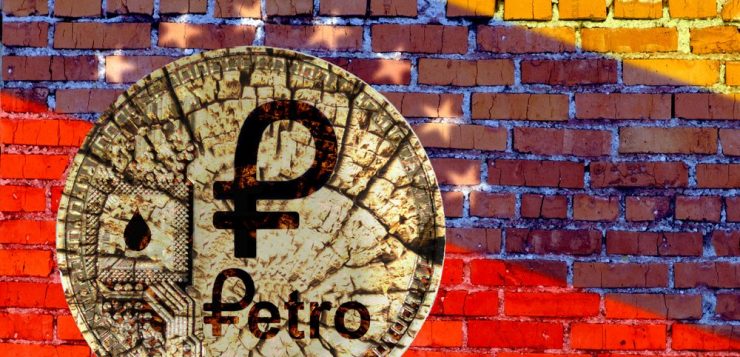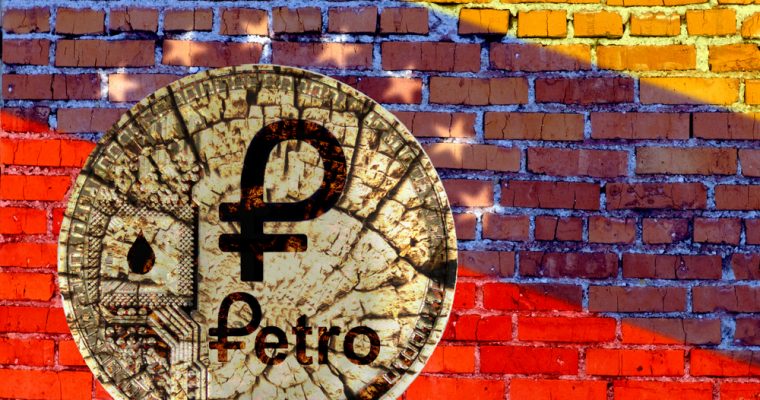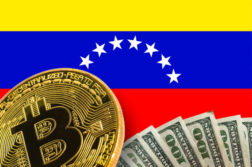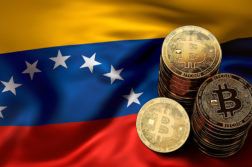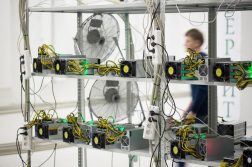A month after Venezuelan president Nicholas Maduro announced the creation of the Petro, a state-backed cryptocurrency that would supposedly bring the country out of six-figure hyperinflation, the only place the Petro seems to exist is in the media.
A Reuters special report recently documented the situation in the oil-rich savanna region around the town of Atapirire, which is where the bulk of the oil-reserves supposedly backing the Petro are situated.
“5 Billion Barrels of Crude Oil”
Back in February when Maduro announced the decision to create the Petro, the sparsely inhabited region around Atapirire was touted as a liquid goldmine, containing proven reserves of over 5.3 billion barrels of crude oil, citing data from an “independent international certification agency”.
As the government battled to find a way out of an economic situation only comparable in severity to Weimar Germany and post-millennial Zimbabwe, these oil reserves in a oilfield called Ayacucho I were announced as the backing asset for the new cryptocurrency, using the price of Venezuelan crude oil (roughly $66 per barrel) as a guide.
According to the official line, funds from investors all over the world would flow into the area, creating jobs and breathing new life into Venezuela’s creaking oil export industry which suffers from a chronic lack of investment and outdated machinery.
The visit to the area by Reuters revealed a very different reality, as residents have apparently seen neither the Petro nor its promised investment influx in Atapirire. In fact, as it turned out, practically nobody within or outside Venezuela seemed to have ever got hold of the Petro.
Where is the Petro?
According to the report, no shops in Venezuela are currently known to accept the Petro, and the only buyers that can be reached are anonymous posters on forums like Bitcointalk. Some posters complain about being ‘scammed’, while other posters parrot the Venezuelan government line, claiming to have Petro tokens and decrying US sanctions and negative media coverage.
At government level, the contradiction is also in evidence as President Maduro claims on the one hand that the Petro ICO raised $5 billion and the coin is already active, while cabinet minister Hugbel Roa who was involved in the Petro project says that the technology behind the Petro is still being developed and that nobody actually has any Petro tokens yet.
Adding to the general sense of confusion is the lack of clarity over the whereabouts of the Superintendence of Cryptoassets, which is the government agency that supposedly oversees the Petro. It apparently has no confirmed physical presence, its website is inactive, and its president Joselit Ramirez does not respond to messages on his social media pages.
Whither the Petro ICO?
Earlier in the year, President Maduro claimed that the anonymous nature of cryptocurrency would help investors circumvent a ban on American citizens buying or using the Petro instituted by U.S. President Donald Trump in March.
He continues to double down on this position, claiming that the Petro ICO brought in over $5 billion – an amount that would make it by far the most successful ICO ever conducted. Experts dispute this however, saying that records linked to the ICO do not contain sufficient information to determine how much was raised or if an ICO actually took place at all.
Tom Robinson, chief data officer and co-founder of London-based Elliptic is quoted in the Reuters report saying:
“This certainly doesn’t look like a typical ICO, given the low level of transaction activity. We have found no evidence that anyone has been issued a petro, nor of it being actively traded on any exchange.”
Tellingly, Venezuelan authorities have not provided an ICO purchase registry to substantiate Maduro’s claims. At best, there is a suggestion that an NEM-based token issuance in March purportedly by the Venezuelan government may have raised about $850 million from the sale of 82.4 million tokens, but the absence of any stated investors makes this practically impossible to verify.
With the sole exception of India’s Coinsecure, no major cryptocurrency exchanges on earth list the Petro. Instead, it is a handful of little-known exchanges scattered across Asia and South America – some with no internet presence – who are presented as the custodians of a purportedly booming Petro trade.
Castles in the Air
Many in Venezuela and beyond see all of this as a sign that Maduro’s government is either fundamentally incompetent or actively fraudulent on the subject of the Petro.
Speaking to Reuters, Alejandro Machado, a crypto consultant and computer scientist in Venezuela accuses the government of building castles in the air.
He says:
“There is no way to link prices or exchange rates to a token that doesn’t trade, precisely because there is no way to know what it actually sells for.”
The total absence of any infrastructure or investment indications for Atapirire is also taken as a sign that the Venezuelan government’s grand cryptocurrency plan is hot air.
In the words of Francisco Monaldi, a Venezuelan professor of Latin American energy policy at Rice University:
“There is no investment plan for this area and no reason to think it would be developed before other fields with better conditions.”
Back in Atapirire, there is still no sign of either the Petro or the oil production that will make it viable. Standing above 5 billion barrels of crude oil that supposedly form the entire basis of Venezuela’s Petro-led future, nobody seems to know exactly what the Petro is or when it will ever become available.
Featured image from Shutterstock.
Follow us on Telegram or subscribe to our newsletter here.
• Join CCN’s crypto community for $9.99 per month, click here.
• Want exclusive analysis and crypto insights from Hacked.com? Click here.
• Open Positions at CCN: Full Time and Part Time Journalists Wanted.




